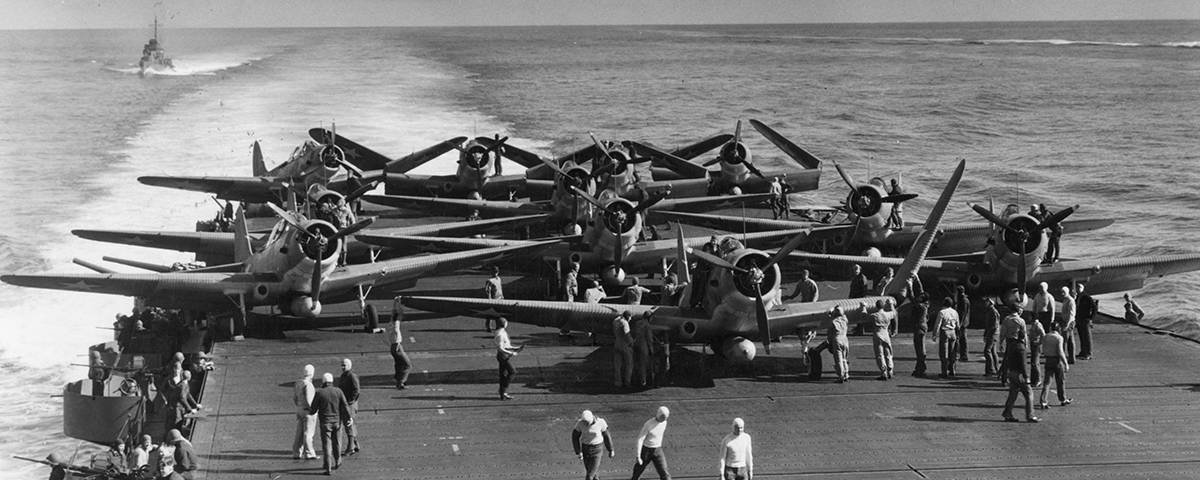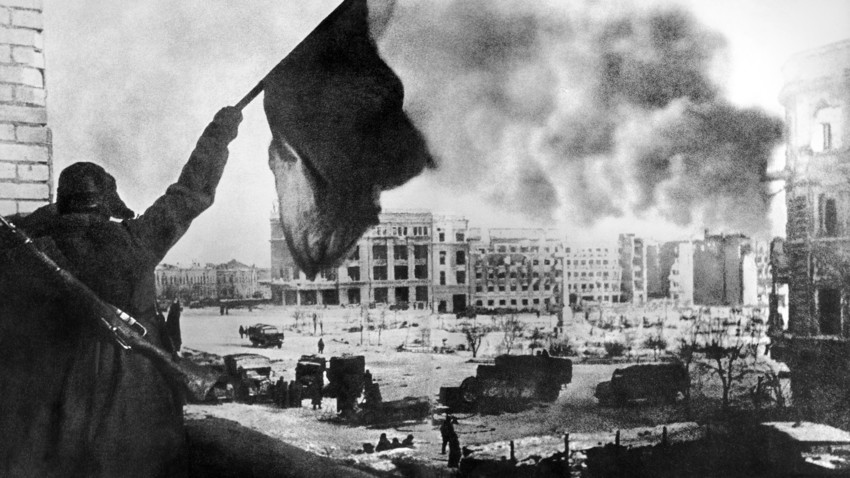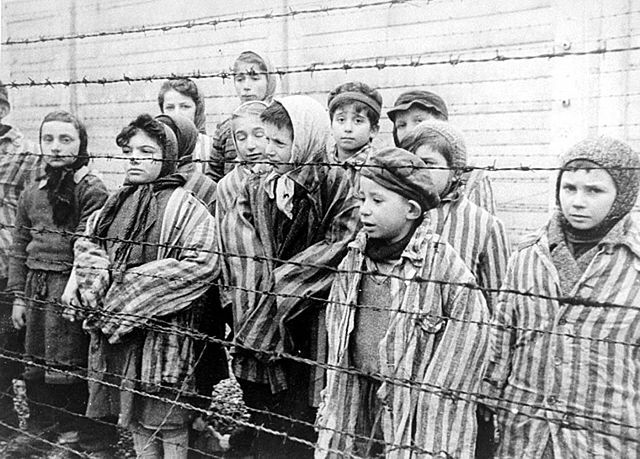World War II
World War II, also known as the Second World War was a global war that started on the 1st of September 1939, and ended on the 2nd of September 1945. There were two sides, the Axis Powers and the Allies. The Axis Powers included Germany, Italy and Japan. The Allies consisted of 17 countries: Britain, France, Australia, Canada, New Zealand, India, The Soviet Union, China, The United States of America, Belgium, Denmark, Estonia, Greece, Latvia, Malta, Poland and South Africa. Some countries, for example Sweden, Switzerland and Spain were neutral counties, meaning they didn't choose sides.
September 1st, 1939: Hitler invades Poland
The invasion of Poland, or as it is known as in Poland, the 'September Campaign', or 'The 1939 Defensive War', began at 4:45 am, when around 1.5 million German troops invaded Poland, across it's whole 1,750-mile border, with German controlled territory. Adolf Hitler claimed that the attack was a defensive action, however Britain and France were unconvinced.
:no_upscale()/cdn.vox-cdn.com/uploads/chorus_asset/file/676408/3239824.0.jpg)
:no_upscale()/cdn.vox-cdn.com/uploads/chorus_asset/file/676408/3239824.0.jpg)
September 3rd, 1939: Britain and France declare war on Germany
In response to Hitler's invasion on Poland, Britain and France, two countries who were allies of the now overrun nation declared war on Germany. The first casualty of this declaration not being German, but the British ocean liner 'Athena', which was sunk by a German U-30 submarine that had assumed the liner was armed. Out of the 1,100 odd people in board, 112 lost their lives. On board Athena were 28 Americans, however, Roosevelt announced that The United States would remain neutral.

January 8th, 1940: Rationing starts in the UK
Rationing was introduced multiple times temporarily by the British Government during the 20th century. More so during and after the war. At the start of World War II, the UK was importing 20,000,000 tons of food per year, including roughly 70% of it's cheese and sugar, almost 80% of fruits, and 70% of cereals and fats, they also imported just over half of it's meat. At the time, the country's population was about 50 million. During the Battle of Atlantic, it was one of Germany's key strategies to attack cargo ships heading towards Britain. Because of this, the Ministry of Food created a system of rationing.
May 10th, 1940: Churchill becomes prime minister
On the 7th of may, a debate was held in the House of Commons, discussing the country's disastrous campaign against the Germans in Norway. This debate quickly turned to a sway, and a vote in the people's confidence in their current PM Neville Chamberlain. He won the vote, however it was clear he had lost his colleagues confidence. Because of this, Neville Chamberlain attempted to form a coalition between his part (The Conservatives) and Labour and the Liberals. Labour leader Clement Attlee refused, and Chamberlain had no choice but to resign. By now, there were two candidates for prime minister. Lord Halifax, and Winston Churchill. Lord Halifax, who was Chamberlains preferred option for PM, turned down the offer, and Winston Churchill became the new prime minister.
May 26th, 1940: Troops are evacuated from Dunkirk
The aim of the evacuation of Dunkirk, code named Operation Dynamo, was to evacuate the British Expeditionary Force and their allied troops from Dunkirk, where they were currently cornered, after Germany advanced into France, trapping them on the beaches of Dunkirk. Both naval vessels and hundreds of civilian boats were used. When it ended on June 4th, 198,000 British soldiers 140,000 French and Belgian troops had been saved.
September 17th, 1940: Hitler postpones invasion
Two days after the RAF's (Royal Air Force's) victory over the Luftwaffe on the 15th of September, Hitler ordered that operation sea lion (the invasion on Britain) to be postponed. Although he insisted the already assembled forces stayed prepared at all times, Hitler was now turning his attention to the east, where he was now beginning to plan an attack/invasion on the Soviet Union.
June 22nd, 1941: Operation Barbarossa
Operation Barbarossa, once named operation Fritz, was the code name for Germany's attack on the Soviet Union, and was launched on June 22nd. Hitler and his generals originally planned to undergo the invasion in mid-May 1941, but the unforeseen necessity of invading Greece and Yugoslavia forced them into postponing the invasion. For the campaign against the Soviet Union, the Germans had a force of almost 150 divisions containing about three million troops. Among those units were 19 panzer divisions (divisions armed with armoured tanks), and all together the Barbarossa force had roughly 3,000 tanks, 7,000 artillery pieces, and 2,500 aircrafts. It was the largest and most powerful invasion force in human history. Not only this, but the Germans’ strength was increased by more than 30 divisions of Finnish and Romanian troops. However, the Soviet Union had twice, or perhaps even three times as many tanks and aircrafts as the Germans, though most of their aircrafts were out of date and obsolete. Though the Germans were able to correctly estimate their were 150 divisions in the Western side of the Soviet Union, they were unaware that Joseph Stalin could, and did, bring up more than 200 new divisions by the middle of August, meaning there were now 360 divisions, 200 more then they prepared for. Because the Germans were unaware of this, they managed to break through the original Soviet armies, but were immediately stopped by the new ones. This could have been avoided if it weren't for the fact that Hitler and his fellow generals had spent most of August arguing over which root to take. They also believed all of the Soviet Regime would collapse within 3-6 months after their invasion due to the lack of domestic support.


December 7th, 1941: Attack on Pearl Harbour
Pearl Harbour is a U.S naval base near Honolulu, Hawaii. Just before 8:00 am on Sunday morning, December 7th 1941, hundreds of Japanese fighter planes attacked the base, managing to destroy or damage 20 American naval vessels, which included 8 battleships and over 300 aircrafts. More than two and a half thousand Americans died during this attack, some of which were civilians, and 1,000 more were wounded. The day after the attack on Pearl Harbour, Franklin D. Roosevelt told Congress to declare war on Japan.


January 1942: Mass murder of Jewish people begins at Auschwitz
Since the 1920's, the Nazis had declared that Bolshevism was the greatest threat to European society, and accused the Soviet Union of being the front of a Jewish conspiracy, who's aim was to rule the other nations. When Germany broke through the interior of the Soviet Union, they gained control of numerous Jewish communities that were spread across from the Baltics, across Belarus, and Ukraine to the Black Sea. At the rear of the German army, there were four special units (Einsatzgruppen),whose goal was to fight against all ideological opponents. They were ordered to kill all Communist functionaries, Jews who were holding party and state functions, along with any other "radical elements". The reality of the situation, was that their real purpose was to massacre the Jewish communities. In the beginning, only Jewish men were murdered, but it wasn't long before Jewish woman and children were being slaughtered too. In 1942 the pre-existing concentration and labour camps were transformed into extermination camps, their purpose being to kill the greatest number of people as effectively as possible. Killing by gas, which had already been used in the 'Euthanasia Programme', was now what the Nazi planners considered to be the most suitable and effective way to murder millions of people. From the start of 1942 and onward, extermination centres were slowly created, and equipped with permanent gas chambers.
February 15th, 1942: Singapore falls to Japan
After the fall of the British Colony on February 15th 1942, the Japanese took control over Singapore. Military forces of the Empire of Japan occupied Singapore after defeating British, Australian, Indian and Malayan forces in the Battle of Singapore.
June 7th, 1942: Victory at the Battle of Midway
The Battle of Midway was a naval battle in the Pacific, which occurred between the 4th and 7th of June, only six months after the attack on Pearl Harbour by the Japanese. The United States Navy managed to defeat an attacking fleet from the Imperial Japanese Navy, and in the process inflicted a devastating amount of damage on the Japanese fleet, that was irreparable. The goal of the imperial Japanese Navy was to eliminate the United States from being a strategic power in the Pacific. However, their plan was unsuccessful due to inaccurate assumptions, and the Americans were able to determine the date and location of the attack that Japan was planning.

November 8th, 1942: Operation Torch
Operation Torch was the name given to the Allied invasion of French North Africa in November 1942. It was the first time the British and Americans had joined forces and worked together on an invasion plan.Russia had been urging the Allies to start a new front against the Germans in the western sector of the war in Europe. However the British didn't feel strong enough to attack Germany via France. The British got their way when Roosevelt supported Churchill’s request that the Allies prepare for the French North African option. From North Africa, the plan was to invade Sicily and then on to mainland Italy and move further up Europe. The Allies planned to invade Morocco and Algeria. Both these countries were under the rule of Vichy France. As the Vichy government in France was seen by the Allies to be in collaboration with Nazi Germany, both North African states were considered to be legitimate targets.
February 2nd, 1943: Surrender at Stalingrad
The Battle of Stalingrad (23rd August 1942-2nd February 1943) was the largest confrontation of World War II, in which Germany and its allies fought the Soviet Union for control of the city of Stalingrad in Southern Russia. It was the largest and bloodiest battle in the history of warfare, around 2 million being killed, wounded or captured. After their defeat at Stalingrad, the German High Command had to withdraw their military forces from the Western Front to replace their losses. The German offensive to capture Stalingrad began in August 1942, using elements of both the 6th German army and the 4th Panzer Army, supported by Luftwaffe bombing that reduced much of the city to rubble. By mid-November 1942, the Germans had pushed the Soviet defenders back into narrow zones along the west bank of the Volga River. On the 19th of November 1942, the Red Army launched an attack targeting the weaker Romanian and Hungarian armies who were protecting the German 6th Army's flanks. The Axis forces on the flanks were overrun and the 6th Army was cut off and surrounded in the Stalingrad area. Adolf Hitler ordered the army to stay in Stalingrad and make no attempt to break out. Instead, attempts were made to supply the army by air and to break them out from the outside. Fighting continued for another two months. By the beginning of February 1943, the Axis forces in Stalingrad had exhausted their ammunition and food. The remaining units of the 6th Army surrendered. The battle lasted five months, one week and three days.


September 3rd, 1943: Italy surrenders
On this day, Italy surrendered. An unconditional armistice (an agreement made by opposing sides of a war to stop fighting) was signed in secrecy with the Allies, by a representative of Marshal Pietro Badoglio, Italy's prime minister since Benito Mussolini's downfall in July.
June 6th, 1944: D-Day
D-Day was the day of the Normandy landings of the Allied invasion on Normandy, code named Operation Neptune. Planning for the operation began in 1943. In the months leading up to the invasion, the Allies conducted a substantial military deception, code named Operation Bodyguard, to mislead the Germans as to the date and location of the main Allied landings. The weather on D-Day was inconvenient to say the least, and the operation had to be delayed 24 hours. A further postponement would have meant a delay of at least two weeks, due to the fact that the invasion planners had requirements for the phase of the moon, the tides, and the time of day that meant only a few days each month were deemed suitable. The Allies failed to achieve any of their goals on the first day. A major objective was not captured until 21 July. Only two of the beaches (Juno and Gold) were linked on the first day, however, the operation gained a foothold which the Allies gradually expanded over the coming months. German casualties on D-Day have been estimated at 4,000 to 9,000 men. Allied casualties were at least 10,000, with 4,414 confirmed dead.

August 25th, 1944: Paris is liberated
The liberation began when the French Forces of the Interior (the military structure of the French Resistance) staged an uprising against the Germans, led by General George Patton. On the night of the 24th of August, the 2nd French Armoured Division made its way into Paris and arrived shortly before midnight. The next morning, the main part of the 2nd Armoured Division and US 4th Infantry Division entered the city. Dietrich von Choltitz, commander of the German garrison and the military governor of Paris, surrendered to the French.
27th January, 1945: Auschwitz is liberated by Soviet troops
On January 27th, 1945, the Soviet army entered Auschwitz and liberated more than 7,000 remaining prisoners, most of those 7,000 people ill, starving, and slowly dying. It is estimated that a minimum of 1.3 million people sent to Auschwitz between 1940 and 1945. Of these 1.3 million people, at least 1.1 million were murdered. In mid-January 1945, as Soviet forces approached the Auschwitz camp complex, the SS began evacuating Auschwitz. Nearly 60,000 prisoners were forced to march west from the Auschwitz camp system. Tens of thousands of prisoners, mostly Jews, were forced to march to the city of Wodzislaw in the western part of Upper Silesia, and SS guards shot anyone who fell behind or physically couldn't keep going.


April 30th, 1945: Adolf Hitler commits suicide
On April 30th, 1945, in a bunker under his headquarters in Berlin, Adolf Hitler committed suicide by swallowing a cyanide capsule and shooting himself in the head.
May 7th, 1945: Germany surrenders
Soon after Hitler's death, Germany surrendered, thus ending his dream of "a thousand year Reich". On May 7, 1945, Germany officially surrendered to the Allies, bringing an end to the European conflict in World War II. General Alfred Jodl, representing the German High Command, signed the unconditional surrender of both east and west forces in France, which would take effect the following day.
August 6th, 1945: Bombs are dropped on Hiroshima and Nagasaki
During the final stage of World War II, two nuclear weapon were detonated by the United States over the Japanese cities of Hiroshima and Nagasaki on August 6th and August 9th, 1945. The United States dropped the bombs after obtaining the consent of the United Kingdom.

August 14th, 1945: Japan surrenders
The surrender of Imperial Japan was announced on August 15 and formally signed on September 2, 1945, bringing the hostilities of World War II to a close. By the end of July 1945, the Imperial Japanese Navy was unable to conduct major operations, and an Allied invasion of Japan was definite. With the British Empire and China, the United States called for the unconditional surrender of the Japanese armed forces in the Potsdam Declaration on the 26th of July, 1945 (the alternative being "prompt and utter destruction"). While publicly stating their intentions to fight on to the end, Japan's leaders were privately making deals with the still-neutral Soviet Union to make peace.
No comments:
Post a Comment
Note: only a member of this blog may post a comment.